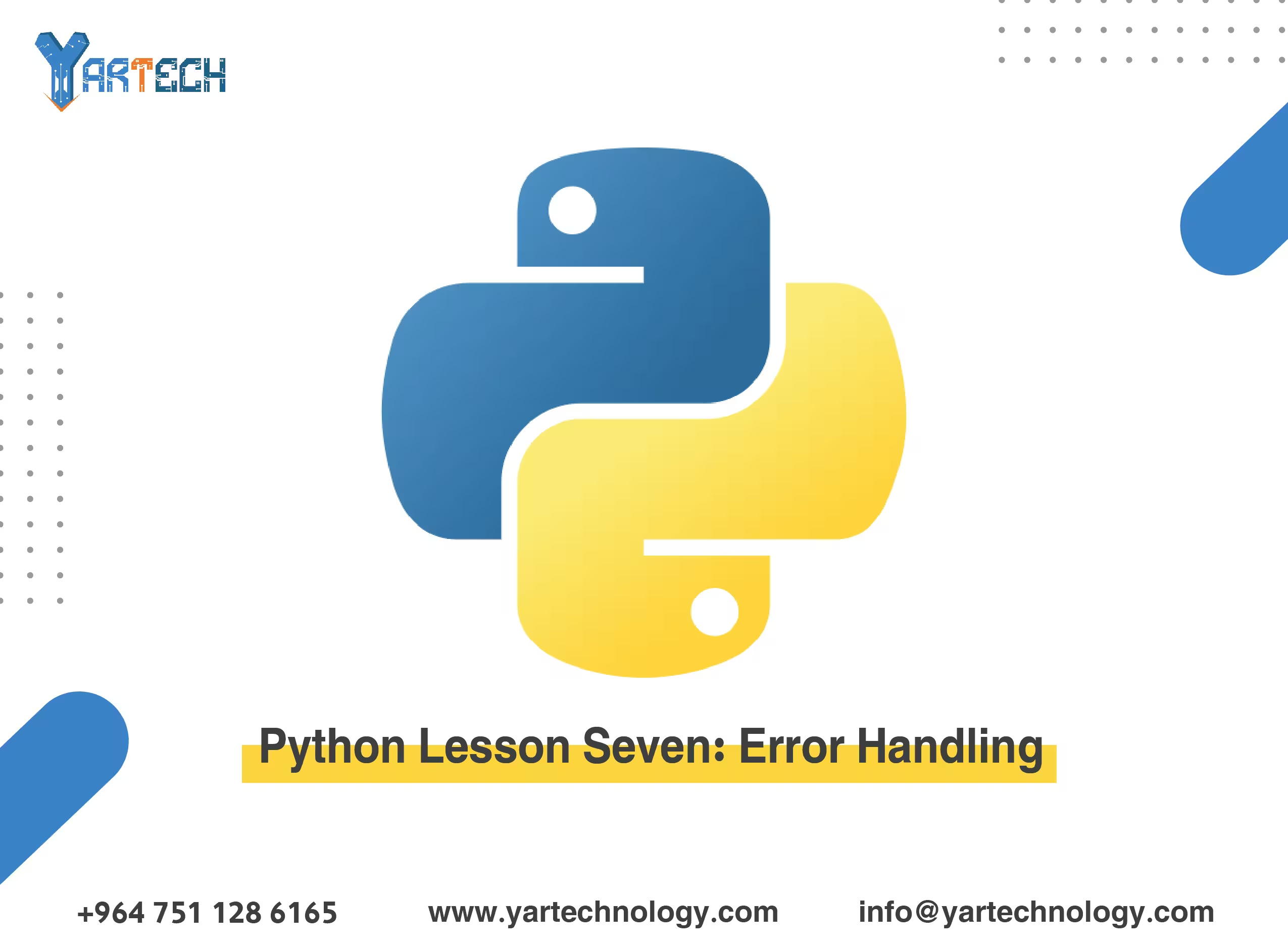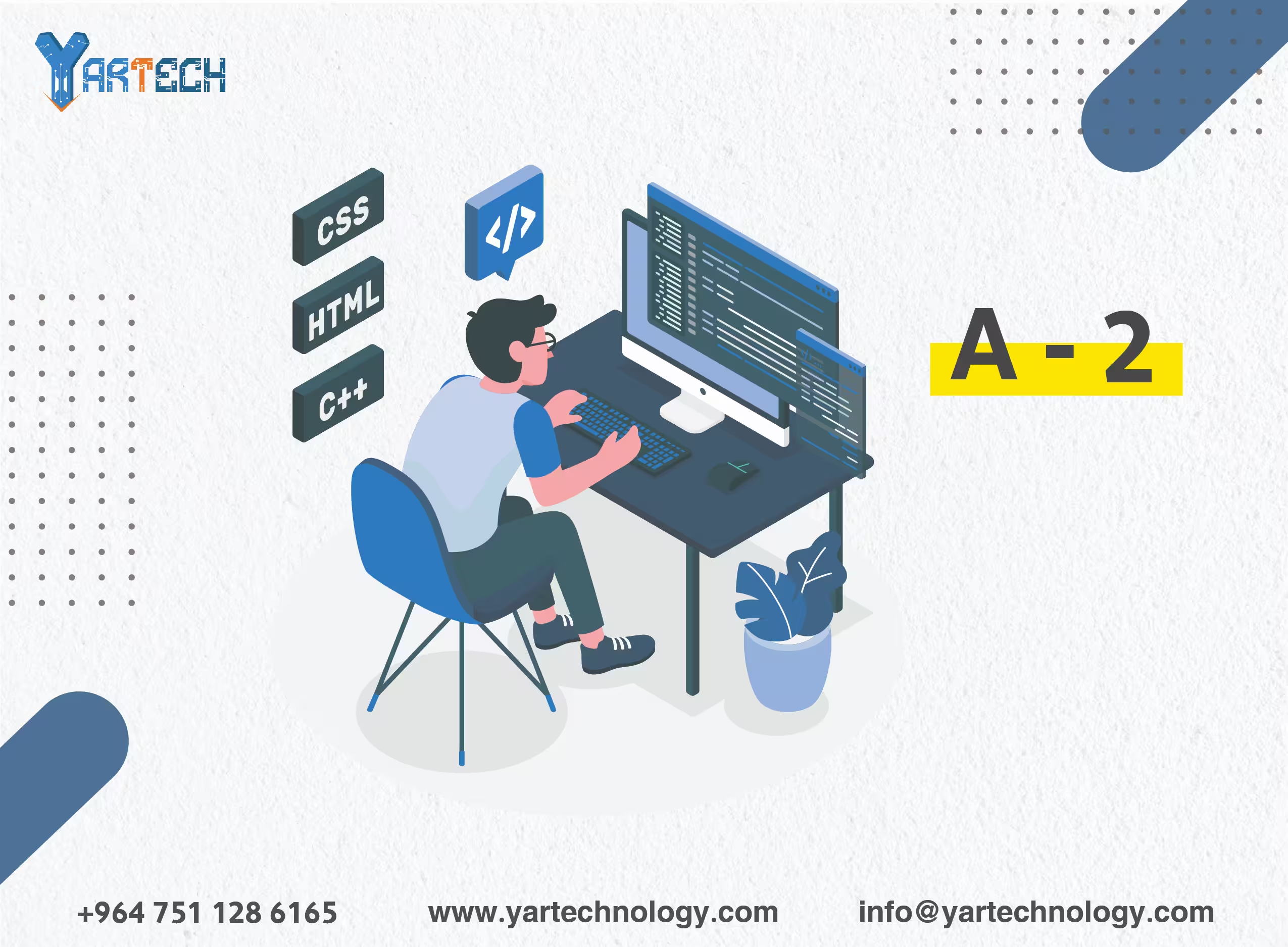Error Handling (Exception Handling)
Python Lesson Seven: How to handle errors or exceptions in programs.
Learn Python
February 5, 2025

Lesson Seven: Error Handling (Exception Handling)
Welcome to the seventh lesson in our Python learning series! In this lesson, we will focus on how to handle errors or exceptions in programs. Error handling is a very important part of programming because it helps you control the behavior that occurs when unexpected problems arise during program execution.
1. What Are Exceptions?
When an error occurs during the execution of a Python program, an exception is raised. If this exception is not handled properly, the program stops running and displays an error message.
For example:
x = 10 / 0 # Error: Division by zeroIf you run the code above, the following error will appear:
ZeroDivisionError: division by zeroCommon Types of Exceptions
- ZeroDivisionError : Occurs when attempting to divide by zero.
- TypeError : Occurs when using incorrect data types.
- ValueError : Occurs when passing an invalid value.
- FileNotFoundError : Occurs when trying to open a non-existent file.
- IndexError : Occurs when trying to access an index that doesn't exist in a list.
- KeyError : Occurs when trying to access a key that doesn't exist in a dictionary.
2. How to Handle Errors Using try and except
To prevent the program from stopping when an error occurs, you can use the try and except structure. The code that might cause an error is placed inside the try block, and if an error occurs, the code inside the except block is executed.
A. Basic Syntax
try:
# Code that may cause an error
x = 10 / 0
except ZeroDivisionError:
# Code to execute if the error occurs
print("Cannot divide by zero!")Note : If you want to handle all types of errors without specifying a particular type, you can use except alone.
try:
x = 10 / 0
except:
print("An error occurred!")3. Handling Multiple Exceptions
You can handle more than one type of error using multiple except blocks.
try:
num = int(input("Enter a number: "))
result = 10 / num
except ZeroDivisionError:
print("Cannot divide by zero!")
except ValueError:
print("Please enter a valid number!")4. Using else and finally
A. else Block
The else block is used to execute code if no error occurs in the try block.
try:
num = int(input("Enter a number: "))
result = 10 / num
except ZeroDivisionError:
print("Cannot divide by zero!")
except ValueError:
print("Please enter a valid number!")
else:
print(f"The result is: {result}")B. finally Block
The finally block is used to execute code regardless of whether an error occurs or not. It's often used to close files or clean up resources.
5. Raising Exceptions Manually Using raise
You can also manually raise exceptions using the raise keyword. This is useful when you want to stop the program if certain conditions are not met.
6. Practical Applications
Application 1: Checking if a File Exists
import os
file_name = "example.txt"
try:
with open(file_name, "r") as file:
print(file.read())
except FileNotFoundError:
print(f"The file {file_name} does not exist!")Application 2: Validating User Input
try:
num = int(input("Enter a number: "))
print(f"The number you entered is: {num}")
except ValueError:
print("Please enter a valid number!")Application 3: Handling Errors in Lists
my_list = [1, 2, 3]
try:
print(my_list[5]) # Index out of range
except IndexError:
print("The index does not exist in the list!")7. Tips for Handling Errors
-
Use
tryandexceptCarefully :
Don't usetryandexceptto avoid all errors. Only handle the errors you expect to occur. -
Specify Exception Types :
Always try to specify the exact type of exception instead of using a generalexcept. -
Use
finallyto Close Resources :
If you're working with files or databases, usefinallyto ensure resources are closed even if an error occurs. -
Raise Appropriate Errors :
Useraiseto throw custom errors when necessary.
Conclusion
In this lesson, you learned how to handle errors or exceptions in Python using try, except, else, and finally. These skills are essential for making your programs more robust and stable.
In the next lesson, we will discuss modules and how to use them to reuse and better organize your code. Keep practicing and don't hesitate to ask questions if you need help!
🚀 You're now on the right path to becoming a professional programmer!
Comments

There are no comments
Please login to leave a review







